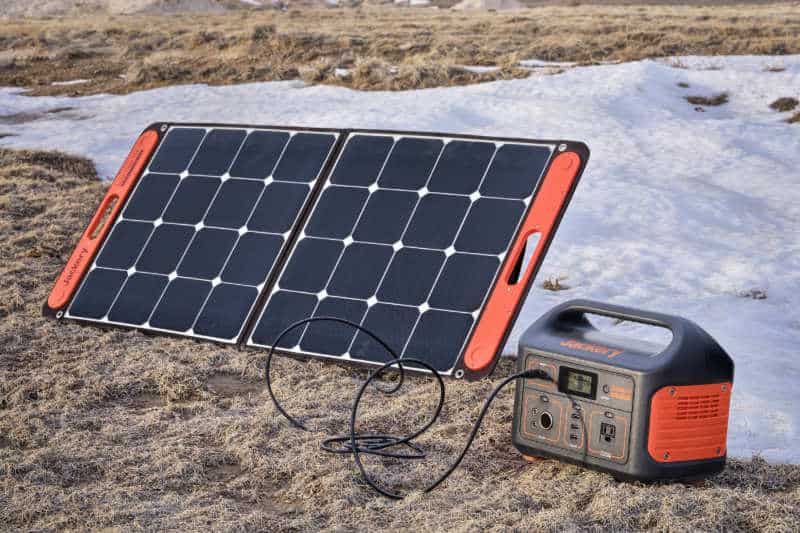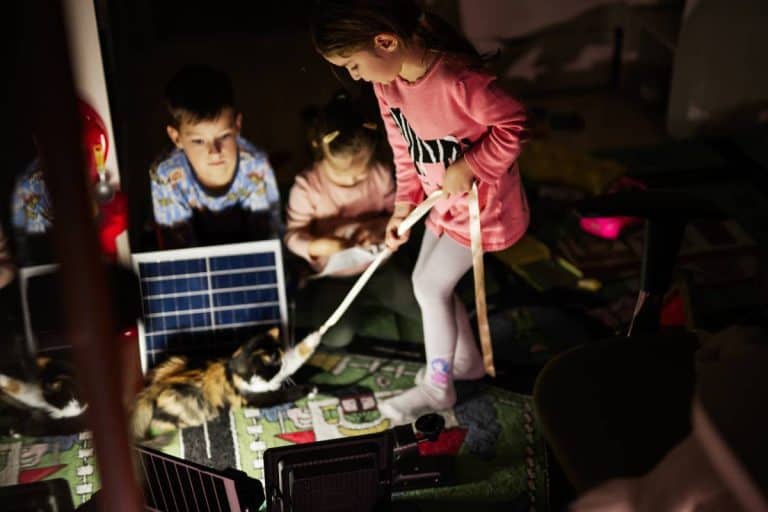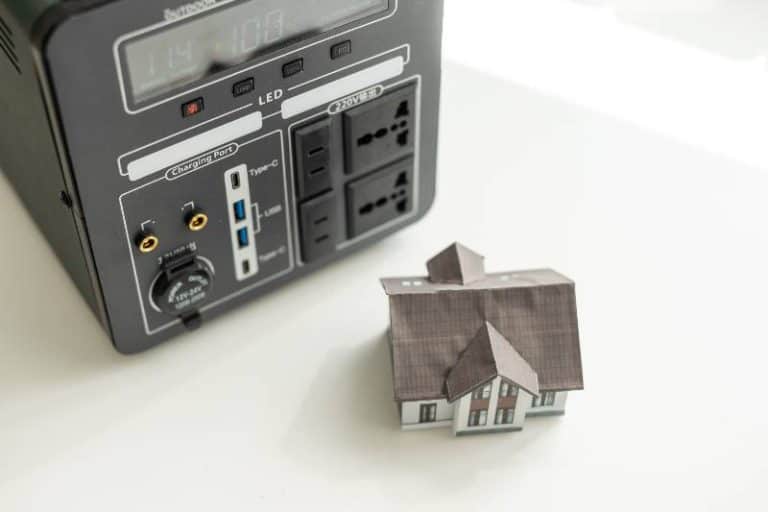How Much Power Can a Portable Solar Panel Generate?
Solar energy is becoming more and more popular each year. More people are installing solar panels on their homes, and businesses are starting to make the switch to renewable energy sources. But what about people who don’t have access to a home solar panel installation? Or what about people who are constantly on the go? That’s where portable solar panels come in! In this blog post, we will discuss how much power can a portable solar panel generate and how it can be used to benefit your life.
A portable solar panel is smaller than ordinary rooftop or ground-mounted panels; home solar panels typically generate between 250 and 365 watts per panel, whereas portable panels generate closer to 100 watts.
Key Takeaways
- The efficiency rating, which is given as a percentage, is directly related to the amount of sunlight that a certain amount of surface area will be able to convert into power.
- The size of a portable solar panel determines how much power it can generate. If your solar panel is big enough, you can use it to power a laptop or solar phone chargers.
- To get the most out of your solar panels, you should place them Between 10 a.m. and 2 p.m. in a spot that gets the most sun during the day.
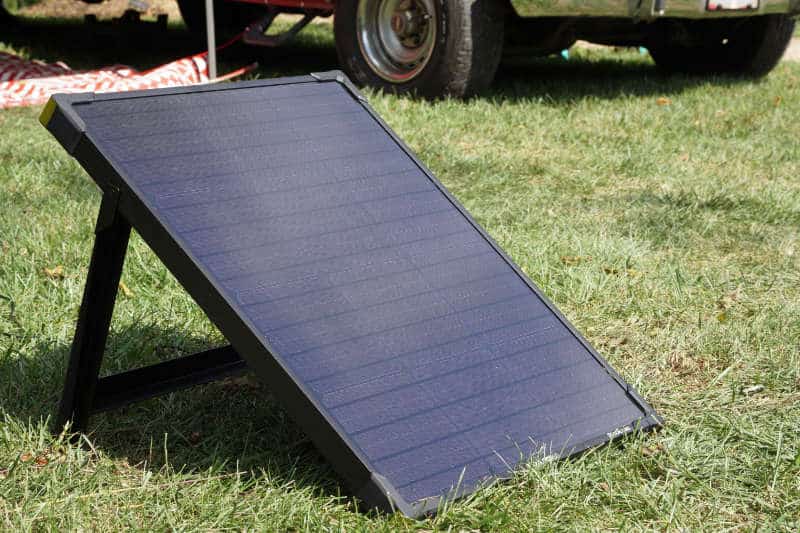
How much energy does a portable solar panel produce?
A portable solar panel is a small, lightweight device that can be carried around and used to charge batteries and power small devices. The average portable solar panel produces about 100 watts per panel, but the actual energy produced depends on the following factors:
Panel’s efficiency
The amount of power that a portable solar panel can generate is determined by its efficiency. The more power a panel can create, the more efficient it is.
The efficiency rating is expressed as a percentage and has a direct correlation to how much sunlight will be converted into electricity by a certain amount of surface area.
For example, if you have two different panels with identical surface areas but one has an efficiency rating of 15% and the other has an efficiency rating of 18%, then the first panel will produce less power than the second one in full sun because it converts less sunlight into electricity.
Sunlight exposure
The amount of power that a portable solar panel can generate is determined by its exposure to sunlight. The more sunshine it receives, the more energy it generates. If you live in Alaska and want to charge your devices using a portable solar panel, you won’t be able to get much out of it because the sun isn’t as strong there.
If you live in Florida, or any other warm climate, then you can get more power out of your portable solar panel than if you lived in Alaska. The same goes for using a battery backup with an inverter during an outage; the more sunlight exposure you have available, the more power will be coming from your battery backup system.
Size of the solar panel
The strength that a portable solar panel can create relies upon the size of the solar panel. If you have a large enough solar panel, you can use it for solar phone chargers or even power up a laptop. However, before you go out and buy yourself a portable solar panel, there are some things that you should know about them.
First of all, not all portable solar panels are created equal. There are many different types of portable solar panels on the market today and their capabilities vary greatly. Some of them can only produce enough power to charge small devices like smartphones or tablets while others can be used to charge laptops and other larger devices.
The size of the solar panel is important because it determines how much energy it can store and how much power it can provide at any given time. The larger the size of the panel, the more powerful it will be able to produce. For example, if you have two identical portable solar panels but one has twice as many cells on it as the other one does then obviously that one will be able to produce twice as much power as well.
Should you pair a solar panel with a battery?
A lot of people ask if they should get a portable solar panel that comes with its built-in battery or if they should just buy a regular one and then pair it with an external battery pack.
This issue has no right or wrong answer; it ultimately boils down to personal preference. Some individuals prefer built-in batteries because it eliminates the need to carry a separate battery pack. Others prefer to pair their solar panel with an external battery pack because it gives them more control over how much power they want to store and how they want to use it.
If you just want to use it for charging small devices like phones or tablets, then a built-in battery might be a good option for you. However, if you plan on using it to charge larger devices like laptops or even power tools, then you might want to consider pairing it with an external battery pack.
Can you connect multiple solar panels?
If you have multiple solar panels, you can connect them to form a larger array. The idea is that the overall output of your system will be greater than the sum of its parts. How much it increases depends on how many panels you add.
In general, if you’re using batteries to store excess energy, adding more panels means that you’ll have more power at your disposal later on when you need it most. This is especially useful if your home is off-grid and relies on renewable energy for all its electricity needs — when there’s no sun, there’s little to no power.
Can you power a home with portable solar panels?
The answer to this question is– yes and no. It depends on how big your home is and how much power you need. If you have a small home and only use a few appliances, then it is possible to power your entire home with portable solar panels. However, if you have a large home or use many appliances, then it is not likely that you will be able to power your entire home with portable solar panels.
In general, the larger your home is, the more power you will need to generate to power it. Portable solar panels are great for generating small amounts of power, but if you need a lot of power, then you will likely need to use a different type of solar panel.
Overview of a portable solar panel
Portable solar panels are a great way to generate power while you are away from home. They are small, lightweight, and easy to transport, making them ideal for camping and RV trips.
Most portable solar panels on the market today range in wattage from 100 watts to 200 watts.
When shopping for a portable solar panel, it is important to keep in mind what you will be using it for. If you plan on using it to charge small electronic devices, then you will not need as much power as someone who plans on using it to power a laptop or even a small appliance.
The size of the solar panel also plays a role in how much power it can generate. The larger the solar panel, the more power it can generate. However, keep in mind that larger solar panels are also more difficult to transport.
If you are searching for a portable solar panel that can create a significant amount of energy, you may want to consider purchasing a model with an integrated battery. This will allow you to save excess energy for use at a later time.
Solar chargers are another type of portable solar panel that is becoming increasingly popular. These small, lightweight devices are designed to charge phones and other small electronic devices. Most solar chargers on the market today range in wattage from 0.25 watts to 12 watts.
When shopping for a solar charger, it is important to keep in mind what you will be using it for. If you intend to charge a phone or other tiny electronic item, you will not require as much electricity as someone who intends to charge a laptop.
How much energy can a portable solar panel generate?
The amount of energy that you can produce from a portable solar panel depends on the size of the solar panel and the amount of sunlight that it receives. In general, the larger the solar panel, the more power it can generate.
Keep in mind that portable solar panels are not as efficient as fixed solar panels. This means that they will not produce as much power per square foot as a fixed solar panel.
The amount of sunlight that your portable solar panel receives also plays a role in how much power it can generate. If you live in an area with lots of sunshine, then your portable solar panel will be able to generate more power than if you live in an area with less sunshine.
In general, a 100-watt portable solar panel will generate about 30 kWh of electricity per month. This is enough to power a small home or RV for a weekend trip. A 200-watt portable solar panel will generate about 60 kWh of electricity per month. This is enough to power a medium-sized home or RV for a week-long trip.
To put it into perspective, a typical household uses about 500 kWh of electricity per month. This means that a 100-watt portable solar panel can power a small home for about six days, and a 200-watt portable solar panel can power a medium-sized home for about three days.
Of course, the amount of power that you use will also play a role in how long your portable solar panel efficiency can power your home. If you only use a few lights and appliances, then your portable solar panel power will be able to power your home for a longer period than if you use more power-hungry devices.
What is the most appropriate way to use a portable solar panel?
If you want to use solar panels for your home, it’s important to understand how they work. Solar panels have a maximum output and are most efficient under certain conditions. To get the most out of your solar panels, you should place them Between 10 a.m. and 2 p.m. in a spot that gets the most sun during the day.
Camping and RV trips
RV and camping enthusiasts know that one of the best ways to enjoy the great outdoors is by using portable solar panels. These incredible sources of power are perfect for those who often spend most of their time on the road. Portable solar panels are an essential source of power for running some appliances during your trip.
As an RV owner, having a few portable solar panels will help you recharge your solar generator during the day when the sun is shining. Solar chargers are another type of portable solar panel that is becoming increasingly popular. These small, lightweight devices are designed to charge phones and other small electronic devices.
With a portable solar panel, you will be able to eliminate the noise pollution typically associated with generators; this will allow you to have a peaceful night and excursion in nature.
Additionally, you will need wires, a solar generator or battery, an inverter, and mounting tools for your solar panel while it is in use.
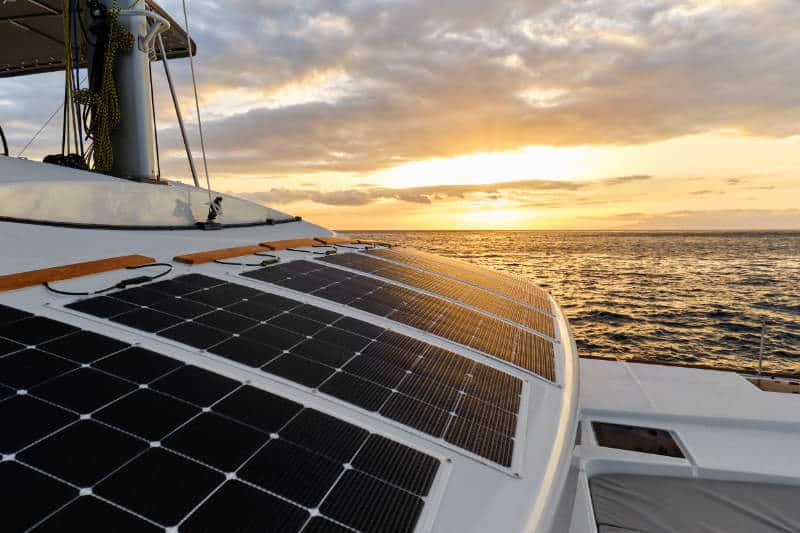
What To Look For When Buying Portable Solar Panels
Efficiency
When you’re looking for a good quality portable solar panel, the first thing you should look at is its efficiency rating. The efficiency rating is a measurement of how well the panel converts sunlight into usable electricity. The higher the rating, the more efficient the panel will be, and vice versa.
Buy What You Need Not What You Want
When it comes to portable solar panels, you want to buy what you need and not what you want. You might want the biggest, most powerful solar panel on the market but if it’s too big for your needs, it may not be worth the money.
Portability
The most obvious factor to consider when buying portable solar panels is portability. If you want something that you can take with you when traveling or camping, then it needs to be lightweight and foldable.
The weight of the panel itself shouldn’t be too much of an issue (unless you’re carrying it across long distances), but the overall size of the panel can make it difficult to carry if folded up. If possible, try to find one that folds down into a small package so that it’s easy to transport without taking up too much space in your backpack or luggage.
Budget
Portable solar panels are not cheap, but they can be an affordable option for people who want to cut their electricity bills and use clean energy. The price of the solar panel will vary depending on the wattage and size of the panels you want. You can find affordable options for under $100 up to more expensive ones that cost hundreds or even thousands of dollars.
Devices and appliance
The devices and appliances that you plan on charging with these panels will determine what size of panel you need. If you don’t already have an idea of what devices you’ll be using the most often, it’s best to buy a larger panel so that it can charge multiple devices at once. This way, if one device runs out of power before another one does, you can simply switch over to the second device without having to wait for it to charge up again.
How Does a Solar Panel Produce Energy?
Solar panels can produce energy by using photovoltaic cells. These cells are made of materials that allow them to absorb sunlight and convert it into electrical energy. The electricity produced by the solar panel can then be used to power any number of devices or appliances.
Additionally, the amount of energy that a solar panel can produce will depend on several factors, including the size of the panel, the type of materials used in the panel, and the amount of sunlight that is available.
Key Solar Panel Terms
Solar panels are a great way to save on your electricity bills. But before you decide to invest in them, you’ll want to know some key terms and concepts. Here are the basics:
kW
A kilowatt is simply a measure of how much power an electric appliance consumes—it’s 1000 watts to be exact. So, if you have a 100-watt light bulb and a 500-watt microwave running at the same time, they’re consuming a total of 600 watts.
kWh
A kilowatt-hour, otherwise known as a kW, is a way to measure how much energy you’re using. It’s not the number of kilowatts you’re using in an hour, but rather the amount of energy that your devices or appliances use in an hour.
DC
DC is the flow of electrical charge; Electrochemical cells are exemplary examples of DC power. A conventional 1.5-volt cell, which is used to power numerous electrical items such as Remote controls and watches, is an example of an electrochemical cell.
AC
Alternating current (AC) is an electric current that occasionally reverses direction; it is the current that powers your home.
Cover Your Electricity Needs with Solar
If you’re looking to save money on your electricity bill, solar panels may be the solution. Solar power is one of the fastest-growing industries in the United States, and hundreds of thousands of people have already taken advantage of this opportunity to make their homes more energy efficient and cost-effective.
How Much Power Can a Portable Solar Panel Generate FAQs
How much electricity can a solar panel produce each day?
The amount of power a solar panel can generate per day will depend on the size of the panel, the type of materials used in the panel, and the amount of sunlight that is available.
With an average of 4 peak sun hours/day, 1 watt of solar panel-rated power will produce 4 watt-hours (Wh) of energy on average. This quantity corresponds to 0.004kWh, so a 300-watt solar panel will produce 1.22kWh each day.
How much power does a small solar panel produce?
Miniature solar panels typically yield between 0.06 and 4 watts of electricity. The average solar panel produces around 200 watts of power, but they can range in size from very small panels that generate just a few watts to large-scale commercial panels that produce hundreds or even thousands of watts.
How much power can a solar panel generate per hour?
The amount of power a solar panel can generate per hour will depend on the size of the panel, the type of materials used in the panel, and the amount of sunlight that is available. But the majority of home solar panels available today are rated for between 250 and 400 watts per hour.
Conclusion
Investing in a portable solar panel can be a great way to offset some of the electricity costs associated with your endeavor. It is important to remember, however, that the power output of your panel will vary based on several factors. Be sure to do your research so that you can select a panel that will best suit your needs.
